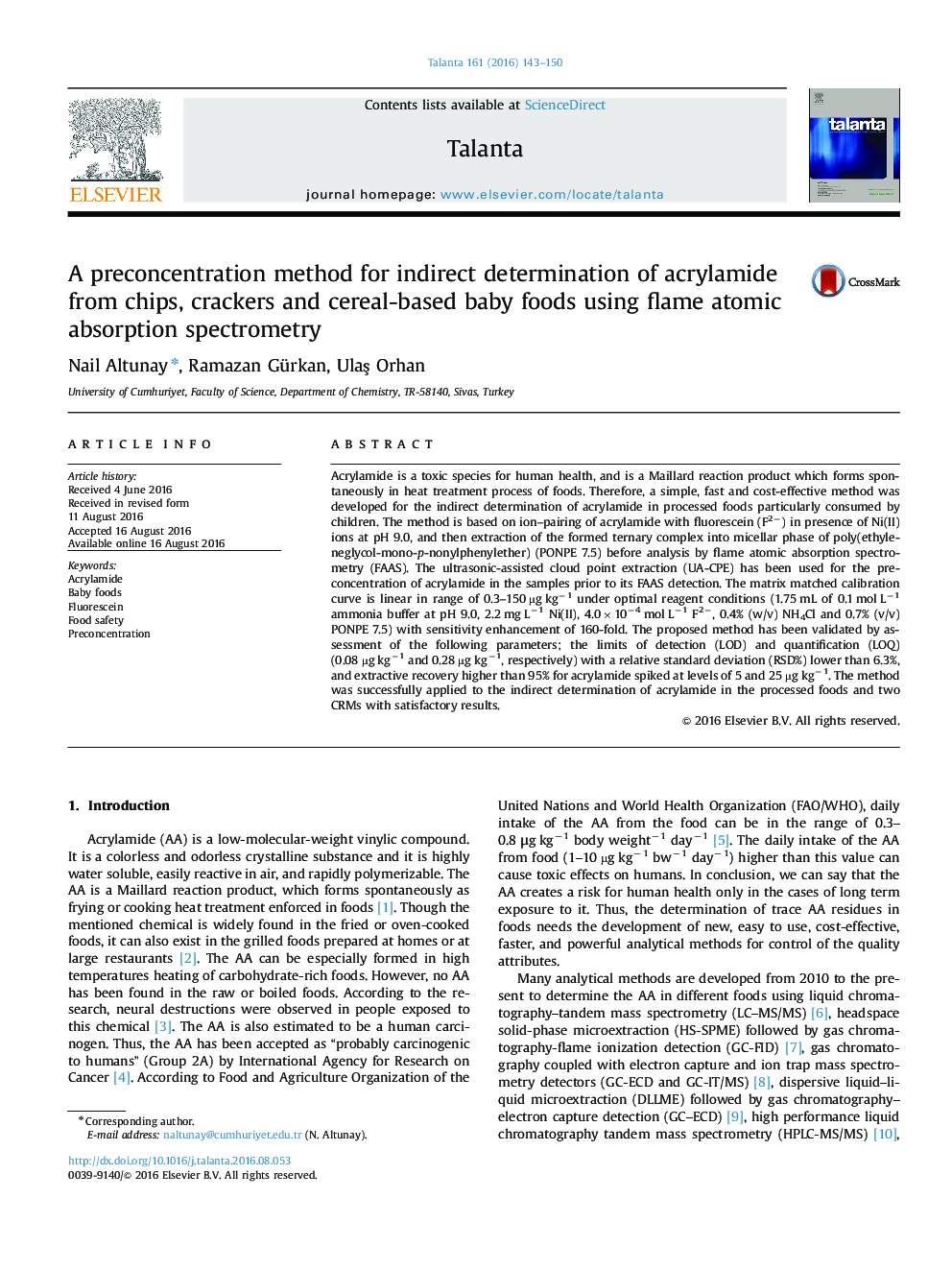| کد مقاله | کد نشریه | سال انتشار | مقاله انگلیسی | نسخه تمام متن |
|---|---|---|---|---|
| 1241700 | 1495775 | 2016 | 8 صفحه PDF | دانلود رایگان |
• A preconcentration method is developed for indirect detection of acrylamide in foods by FAAS.
• Ion-pairing, fluorescein in presence of Ni(II) at pH 9.0 is employed for sensitivity improvement.
• The method provides a low detection limit enough to meet the food safety requirements.
• The method is validated through the analysis of two CRMs.
• The method is successfully applied to indirect detection of acrylamide in selected foodstuffs.
Acrylamide is a toxic species for human health, and is a Maillard reaction product which forms spontaneously in heat treatment process of foods. Therefore, a simple, fast and cost-effective method was developed for the indirect determination of acrylamide in processed foods particularly consumed by children. The method is based on ion–pairing of acrylamide with fluorescein (F2−) in presence of Ni(II) ions at pH 9.0, and then extraction of the formed ternary complex into micellar phase of poly(ethyleneglycol-mono-p-nonylphenylether) (PONPE 7.5) before analysis by flame atomic absorption spectrometry (FAAS). The ultrasonic-assisted cloud point extraction (UA-CPE) has been used for the preconcentration of acrylamide in the samples prior to its FAAS detection. The matrix matched calibration curve is linear in range of 0.3–150 µg kg−1 under optimal reagent conditions (1.75 mL of 0.1 mol L−1 ammonia buffer at pH 9.0, 2.2 mg L−1 Ni(II), 4.0×10−4 mol L−1 F2−, 0.4% (w/v) NH4Cl and 0.7% (v/v) PONPE 7.5) with sensitivity enhancement of 160-fold. The proposed method has been validated by assessment of the following parameters; the limits of detection (LOD) and quantification (LOQ) (0.08 µg kg−1 and 0.28 µg kg−1, respectively) with a relative standard deviation (RSD%) lower than 6.3%, and extractive recovery higher than 95% for acrylamide spiked at levels of 5 and 25 µg kg−1. The method was successfully applied to the indirect determination of acrylamide in the processed foods and two CRMs with satisfactory results.
Figure optionsDownload as PowerPoint slide
Journal: Talanta - Volume 161, 1 December 2016, Pages 143–150
